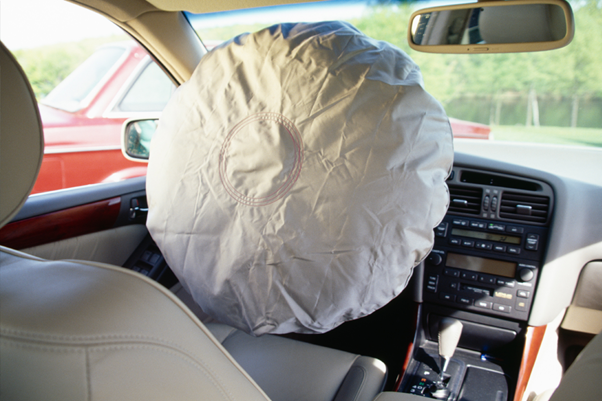How do Airbag Systems Work?

Your vehicle is equipped with an airbag system that protects in the event of collision? How does it exactly work? Well, your car has crash sensors on the front bumper, doors, side panels, and the passenger compartment. When a collision takes place, the crash sensors send a signal to the Airbag Control Module (ACM).
The ACM identifies the severity of impact using a standard, and when the collision is identified as severe, the ACM activates the inflator found inside the airbag module. A rapid chemical reaction takes place and uses sodium azide to produce nitrogen to quickly inflate the airbags to cushion the passenger from impact.
What are the common types of airbags?
There are three different kinds of airbags that aim to offer protection in specific areas of a vehicle. These are the frontal airbags, side airbags, and side curtain airbags.
Frontal airbags
Frontal airbags inflate during frontal collision or any severe impact received by the front area of the car. It is designed to create a barrier between you and the car’s front interior. The main goal of the frontal airbag is to prevent your head and chest from hitting the steering wheel or the windshield.
There is a difference in the speed of airbag deployment depending on whether you are wearing a seatbelt or not. For belted occupants, the airbags deploy at a speed of 16 mph, while its 8 to 14 mph for non-belted occupants.
Side airbags
During side collisions, side airbags are designed to keep a car occupant’s head and chest from hitting the car’s interiors or other objects like poles. Because there is little space between a car occupant and the car’s side interior, side airbags are designed to deploy faster. We’re talking 10 to 20 milliseconds of a crash.
The side airbags may activate at a low speed of 8 mph during narrow side collisions like a tree crashing against your car. In the case of side impacts from vehicle-to-vehicle collisions
Side curtain airbags
During rollover collisions, side curtain airbags are what offer you protection. Located above the windows, they create a curtain-like barrier when activated and cover the car’s interior. What activates the deployment of side curtain airbags are the severe tilt and sideways movement.
In 10 to 20 milliseconds of a crash, the side airbags are deployed, and they stay inflated longer than frontal airbags to protect car occupants from multiple-roll crashes.
Why do airbags fail to deploy at times?
There are multiple cases of airbags failing to deploy in a crash, and this can be traced back to multiple issues.
Sensor failure
One of the main reasons to look into airbag failure is faulty sensors. When sensors fail to detect the impacts of a crash, and the car’s speed and force, nothing will trigger the chain of reaction needed to deploy an airbag.
Electrical problems
Another component to look into is the electrical system. If the system has problematic electrical components, the deployment of airbags may be disrupted.
Component defects
When components of the airbag system like inflators or modules are dysfunctional, the airbags are compromised.
Conclusions
Airbags are an important feature that keep you and your passengers safe. In case of airbag problems, immediately take your car to your trusted mechanic.